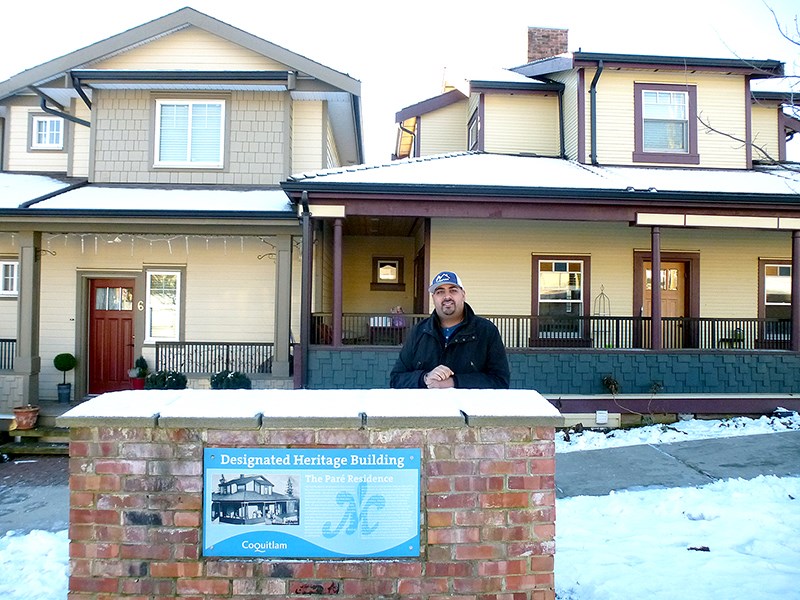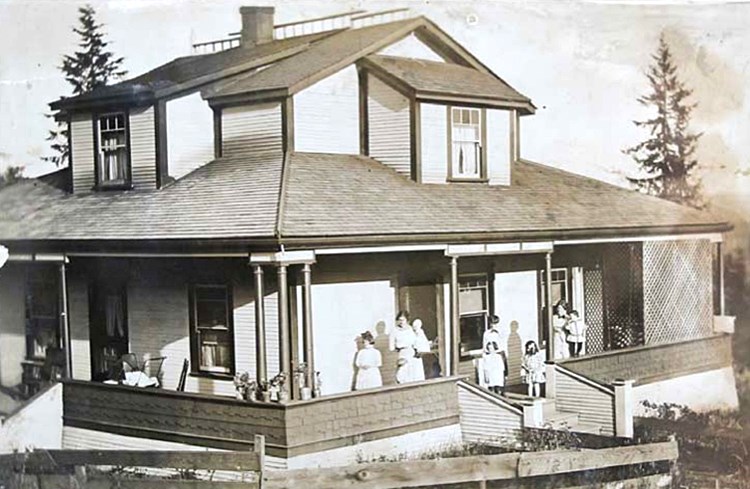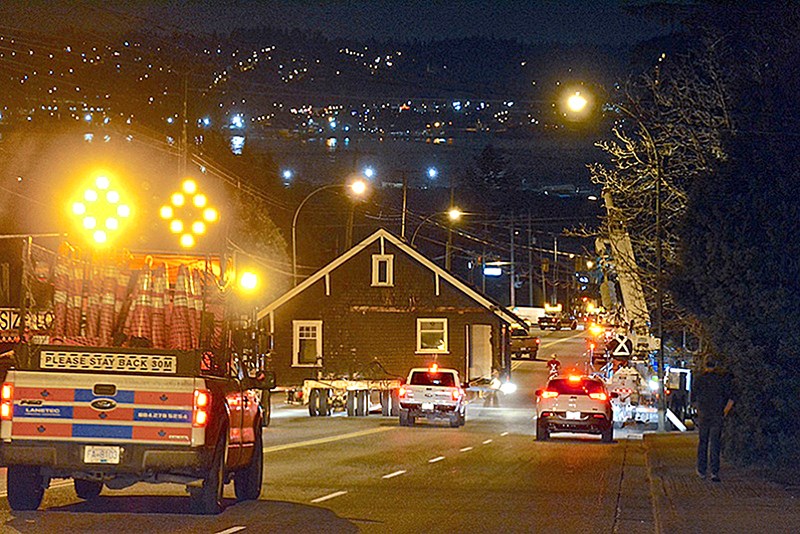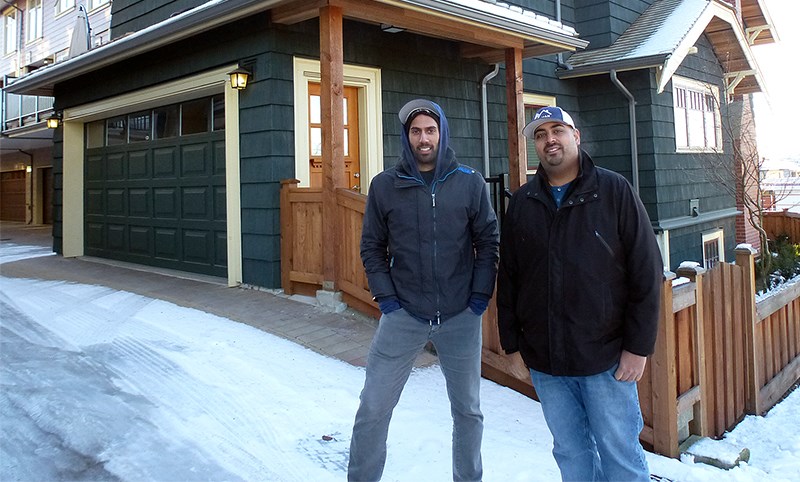Coquitlam has changed greatly since it was a community of homesteads cut into the forest. Towers dot the landscape next to the Evergreen Extension with the promise of more development to come. And along its roads, bridges, malls and subdivisions, the city is barely recognizable from its earliest days.
But tucked away in Maillardville, which owes its beginning to francophone migration beginning in 1910, there remains a glimpse of the original city.

While many neighbourhoods feel the bite of the bulldozer as land costs rise, Maillardville continues to be home to some beautiful older homes, many of them sporting new paint and fixtures thanks to legal tools and those few developers who still see value in 100-year old architecture.
One of those developers is Haraman Development Inc., made up of brothers Aman and Harry Parmar. The Coquitlam residents have given new life to three heritage homes, incorporating them into Maillardville townhome projects.
Both young — Harry is 33 and Aman is 29 — and both starting families of their own, the two have built a reputation for saving older homes and incorporating them into new building projects.
"I call him Heritage Harry," said Jim McIntyre, the city's manager of planning and development. "It's kind of a compliment in a way because these heritage developments, they're a labour of love."
Haraman has used Coquitlam's Heritage Revitalization Agreement to preserve heritage buildings in exchange for flexibility on density and other regulations. Their most recent project was one of their most challenging: the relocation of Hutchinson house from 700 Rochester Rd. to 320 Casey St. That required a slow, costly move in the dead of night last February, with the home having to be stripped and reconstructed to meet B.C. Building code standards.
It is now being rebuilt as part of Hillside Village, along with the construction of 13 townhomes, a project that had a somewhat controversial start because it was only narrowly approved 5-4 by Coquitlam council.
But the Parmar brothers say the home had lots of architectural interest as well as ties to Coquitlam's early homesteading days, and was worth keeping even though it had to be moved. Otherwise it would have been knocked down.
"It was brought to us — do you want to do something?" Harry Parmar recalls, noting that after crunching the numbers, the project made sense even though the house needed a lot of work and cost $100,000 to move.
"If we don't start saving these homes, what's going to happen to them?" he added.
Aman is a chartered accountant and Harry has an internet technology business, but they say they learned the construction business from their father, who still provides advice.
Their dad was a builder in Terrace and they want to do the same in Coquitlam. But they also like the Craftsman style of architecture, which is common to the area, and try to incorporate it into new projects they are developing.
"It's a sense of pride we have here," Aman says, adding that with high land costs, the type of property development he and his bother are doing is increasingly challenging. There remains a strong demand for ground-oriented housing, with townhomes being cheaper to buy. "It gives us [young families] an opportunity to get into the market."
Two other projects are completed and Harry said he and his brother are pleased with the way they turned out: Rocheleau Cottage, at 801 Roderick St., which was restored and incorporated into a nine-unit townhouse development, and the restoration of the Paré residence.
The family home of a notable Maillardville family, the Paré residence had been altered over the years and required a significant amount of painstaking restoration to bring it back to its former glory. It now sits upland of the historic Notre Dame de Lourdes Church, and the city has written it up as a case study.
McIntyre said some people question the sense of restoring these older homes, especially if they have to be moved, and if developers gain a substantial amount of density on the lot in exchange. So far, only about a dozen homes have been restored this way, mostly in Maillardville, and for those who enjoy living in a neighbourhood with more character, there are many benefits.
"It's a way of retaining and giving new life to these buildings but basically on someone else's dime," McIntyre said.
As for the Parmar brothers, they are pleased both with what they've built and what they've saved so far — and are always have their eye out for new projects.
HOMES SAVED
Paré Residence

307 Begin St., Coquitlam — project started in 2011, completed
Built in 1910 by Vitalien Paré, the house is considered one of the earliest and most significant surviving homes in the area due to its prominent location, embellishments and its strong family connections. The Parés were among the first francophones to move to the area to work at nearby Fraser Mills. During its restoration, the home was relocated further to the northwest corner of the property, raised and restored with historical colours and details, including addition of the original wrap-around verandah; six townhome units were built on the remainder of the lot.
Rocheleau Cottage, Coquitlam
801 Roderick Ave., Coquitlam — project started in 2014, completed in 2015
Built in 1929 by the Rocheleaus, a large Québécois family that moved to Maillardville in 1925 in search of jobs. For 55 years, it was lived in by the family of Arthur Rocheleau, who worked at a rope factory in New Westminster. The building style, known as Craftsman bungalow, was popular in the 1920s and ’30s. Haraman Development moved the house slightly, to accommodate site needs, restored it and built and added nine townhouses.

Hutchinson House
320 Casey St. —- project started in 2015, currently under construction
Built in 1921 by the Hutchinson family, which arrived in the area from Vancouver in 1920, it was formerly located at 700 Rochester Ave. and used to be part of a four-acre farm. James Hutchinson was employed as a conductor on the BC Electric Railway based at New Westminster. The home was one of two built on the lot that was subdivided in the 1950s and his family lived in the home for 25 years. The home is valuable for its historic association with Coquitlam's early settlement patterns and has Craftsman design features.



